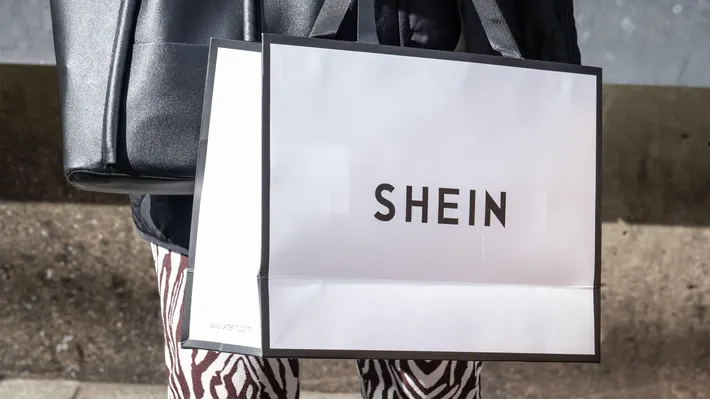“Shein’s Quest for Transformation: Can the Fast Fashion Giant Really Change Its Image?” – Unleash Fashion
What’s Shein’s Fashion Revolution and Environmental Commitments
Shein, the Singapore-headquartered ultra-fast fashion brand, is revolutionizing the fashion industry, second only to Inditex in revenue and making waves globally. The brand, founded in China and headquartered in Singapore, has taken the fashion world by storm, generating an impressive $22.7 billion in revenue last year alone. It’s worth noting that this places Shein on par with H&M, with the industry giant Zara owner Inditex leading the race. As Shein targets to double its revenue to a staggering $58.5 billion by 2025, let’s dive into the Shein “rollercoaster” story, its unique business model, and the environmental trials that are moulding the fashion terrain.
The Shein Phenomenon
Shein’s meteoric rise to success can be attributed to its unique direct-to-consumer business model, supported by a relentless pace of innovation. The company creates and releases thousands of new designs daily, swiftly responding to the latest fashion trends and customer preferences. Notably, Shein’s success is closely tied to its effective use of social media and its ability to engage millions of followers, predominantly through Instagram and TikTok. As a result, this privately owned fashion powerhouse, in discussions with investment banks for a potential U.S. initial public offering, has now achieved a valuation exceeding $60 billion.
Environmental Challenges and Initiatives
However, amid its triumph, Shein has faced environmental scrutiny. Critics argue that the brand contributes significantly to the waste textiles that end up in countries in the Global South. An estimated 40% of clothing sent to the Kantamanto second-hand market in Accra, Ghana, results in waste, adding to environmental issues, including microplastic pollution. Despite the criticism, Shein has responded proactively to these concerns.
Peter Pernot-Day, Shein’s global head of strategic communications, highlights the company’s efforts to minimize waste. Shein claims to have reduced waste from unsold clothes to a remarkable “very low single digits” and, in some cases, below 1%, an uncommon achievement in the fashion industry, where excess inventory can typically reach 25% to 40%. This reduction has been made possible through their unique “direct to consumer” model, producing items in small batches and using digital technology to analyze consumer preferences, allowing them to ramp up production of top-selling items.
Recently, The LA students protested against FIDM’s collaboration with Shein. More than 4500 signed the petition against this, with over 1764 students enrolled according to a report by Vogue Business. The use of universities to undercover unethical practices is very common among Fast Fashion Companies. Even though the scholarship offering is $40,000 for every student, the trust and consumer base Shein will develop is way more beneficial for them than the amount Shein invests. Campaigns like this often misconstrued the brand’s identity than its actual motive.
A Commitment to Sustainability
Shein’s commitment to sustainability extends to a fully circular supply chain by 2050. In partnership with U.S.-based tech company Queen of Raw, Shein has initiated a strategy to rescue excess fabrics from other brands and retailers, effectively upcycling them into their own supply chain. This move aligns with the broader fashion industry trend of repurposing excess materials, estimated to be worth approximately $288 billion in 2022.
Through this partnership, Shein will match “deadstock” fabric with its production processes, significantly reducing waste and environmental impact. The collaboration also employs software like Materia MX to track and report the environmental impact of using deadstock materials, including carbon, chemicals, and water savings.
Additionally, Shein has ventured into peer-to-peer exchanges, allowing customers to sell their unwanted Shein clothing to one another, a successful program that saw one million users signing up in the U.S. Shein also established the Extended Producer Responsibility (EPR) Fund, pledging $50 million over the next five years to address post-consumer waste.
The Road Ahead
While Shein’s initiatives are undoubtedly steps in the right direction, some critics argue that more must be done, emphasizing the need to reduce production from virgin materials. However, Shein is demonstrating a commitment to transparency, with ongoing efforts to report and improve its environmental performance.
As Shein continues to redefine the fashion industry, it remains to be seen how these initiatives will impact its environmental record. Shein’s determination to blend fashion innovation with environmental responsibility is a story worth watching, as it’s set to play a pivotal role in shaping the future of the fashion industry.

How Shein Can Embrace Sustainability: Five Key Steps
Shein, the fast-fashion juggernaut, is making headlines with its rapid growth and potential public listing. However, its sustainability efforts have been under scrutiny. Here are five key points for Shein to enhance its sustainability:
1. Rethink the Design Deluge
Shein produces a staggering 2,000 new items daily, straining resources and quality. To be truly sustainable, it should reduce the number of designs, focusing on quality over quantity. This approach aligns with a reusable clothing program and streamlines its environmental footprint.
2. Elevate Reusable Clothing
Shein’s current output and materials hinder its reusable program. Scaling back daily offerings would allow for higher-quality materials and foster better durability. Shein could create incentives for customers to resell their clothes on its platform, supporting a circular fashion model.
3. Invest Heavily
With over 22.7 billion worth of revenue last year, Shein has the capability to invest significantly in its sustainability initiatives. While donations and facility improvements are positive steps, the magnitude of the issue demands a more substantial financial commitment.
4. Embrace Real Sustainability
Shein’s sustainability efforts should go beyond token gestures. We all know about the greenwashing claims Shein has by collaborating with universities to make it look “inclusive”. Instead, shein must address the root problems within its business practices. Creating demand for ‘latest trends’ at a relentless pace, i.e., slowing down or repurposing only compensates for wasteful consumption.
5. Put Technology (and its resources) to Better Use
Having all the resources and capital in hand, Shein should harness technology to support genuine sustainability. This can happen by working closely with designers and activists, They can expand to eco-friendly materials and environmentally conscious production processes. Prioritizing long-lasting garments over mass production and low prices is a pivotal step toward a truly sustainable future.
Shein’s journey towards sustainability won’t be easy, but it’s a path that needs to be taken for the betterment of the fashion industry and our environment. The relentless pursuit of the latest trends should give way to a more mindful and responsible approach.






